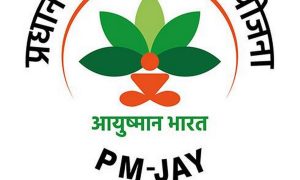While overall, there are no major changes introduced this year, a few additional information is being sought from taxpayers in the new tax return forms.
Let’s delve into a few of these changes in the new income tax return forms.
Additional Categories for Pensioner Column
In the ITR-1 form, which is applicable to those with salary income, under the nature of employment category, the pensioner column has been further categorised into Central, State governments, public sector undertakings, and others.
Read More: Filing ITR for AY 2022-23? Keep these documents ready to avoid mistakes
New Tax Regime-Declaration Details
In the case of ITR-3 and ITR-4, one has to provide details about whether you have opted for a new tax regime under Section 115BAC and filled Form No. 10IE in AY 2021-22 or not.
In case for the current assessment year, you may choose the option- “Opting in now”, “Opt-Out”, or “Continue to Opt”. You need to furnish details of the date of filing Form No. 10IE and acknowledgement number (generated after filing Form No. 10IE).
Additional Information for Businesses to Check Audit Applicability
In the case of a presumptive taxation scheme, one has to specify information related to ‘whether the assessee is declaring income only under Section 44E, 44B, 44BB, 44AD, 44ADA, 44BBA’.
If your response is ‘No’, then you would be required to respond as below-
- Whether the total sales or turnover of the business during the year is between Rs 1 crore and Rs 10 crore.
- If not, turnover is below Rs 1 crore, or it exceeds Rs 10 crore
If you tick ‘Yes’ for total sales or turnover between Rs 1 crore and Rs 10 crore, you would be prompted to respond to two more questions, that is, you need to inform whether-
- the aggregate of all amounts received (sales, turnover, capital contributions, loans, etc.) in cash/ non-a/c payee cheque/ DD during the previous year is not more than 5% of the total aggregate receipts,
- the aggregate of all payments made (amount incurred for expenditure, asset acquisition, repayment of loans, etc.) in cash/ non-a/c payee cheque/ DD during the previous year is not more than 5% of the total aggregate payments.
These questions are required to be responded to check your audit applicability. The audit under Section 44AB of the I-T Act is mandatory if the total sales or gross receipt from the business during the previous year exceeds Rs 1 crore. However, if the cash receipt and payment do not exceed 5%, the audit shall be mandatory if the turnover of the business assessee exceeds Rs 10 crore during the financial year.
Read More: ITR refund status: Steps to check your refund online at Income Tax new portal
Changes under Capital Gains Schedule
Then under Schedule CG (Capital Gains), if you have sold land or a building in a particular financial year, you need to furnish details about the date of purchase/acquisition or date of sale/transfer. Also, permanent account number (PAN) and Aadhaar details of buyers of a property are required to be furnished.
You are required to furnish details related to the original cost of acquisition and indexed cost of acquisition. This is unlike earlier when you had to provide only an indexed cost of acquisition of the asset.
In case renovation or improvement has been made to house property, then year-wise details of the cost of the improvements are required to be provided while filing the new ITR form.
Changes under Schedule of Income from Other Sources
Further, under Schedule OS (Income from Other Sources), new categories have been incorporated, which are related to income deemed to be dividend under Section 2(22)(e).
To understand Section 2(22)(e) of the Income-tax Act, 1961 (ITA), let’s consider a company and a shareholder who is a beneficial owner of 10% or more of equity shares. If the company extends a loan or advance payment to such a shareholder, this is regarded as a deemed dividend under Section 2(22)(e). Earlier, there was no option to report such a dividend separately.
Then in the case of a provident fund, if an individual makes a contribution that is more than Rs 2.5 lakh in a particular year, the interest accrued on such contribution will be taxable. This is effective from April 1, 2021.
New Income Tax Return Form (ITR-U)
A new updated income tax return form (ITR-U) has been introduced, according to which it is now possible to update your tax return for the last two years.
However, ITR-U is not to be filed in case nil return is to be filed, carry forward of losses, claim TDS refund or decrease tax liability from the past years. To file ITR-U, you need to disclose the amount of additional income as per the prescribed income heads and pay extra tax with interest (25%/ 50% of tax due) via challan.
A few reasons to file ITR-U could be related to tax return not filed, incorrect income reported, wrong income heads being chosen, reduction of carry forward loss or depreciation, reduction of a tax credit, and selection of wrong tax rates.
In case of any confusion related to the filing of income tax returns, it is advisable to reach out to tax professionals to avoid any problem in the future.
(The author is Founder and CEO, Clear)





































